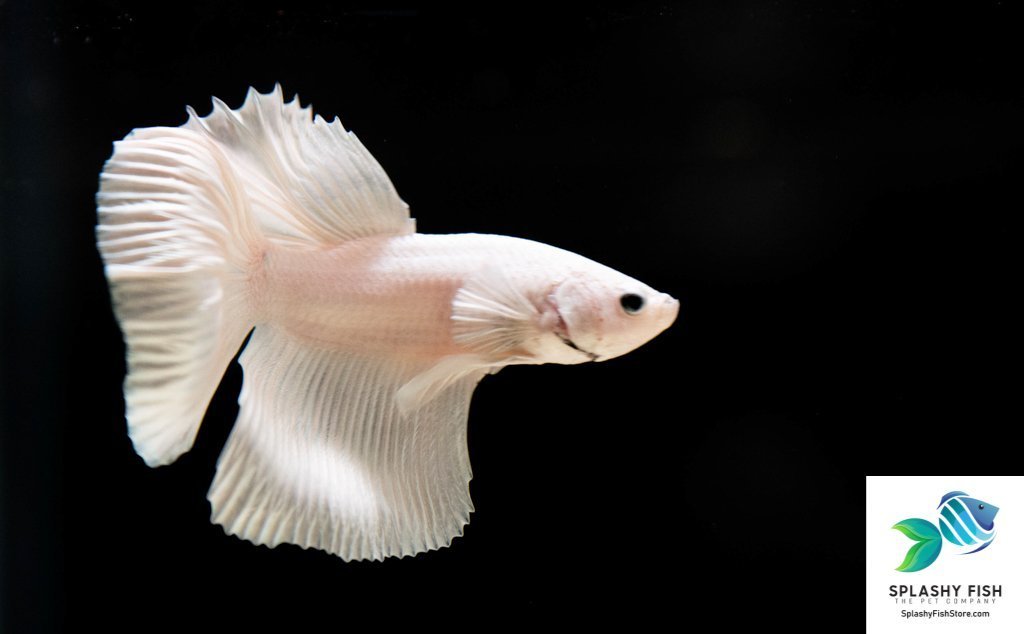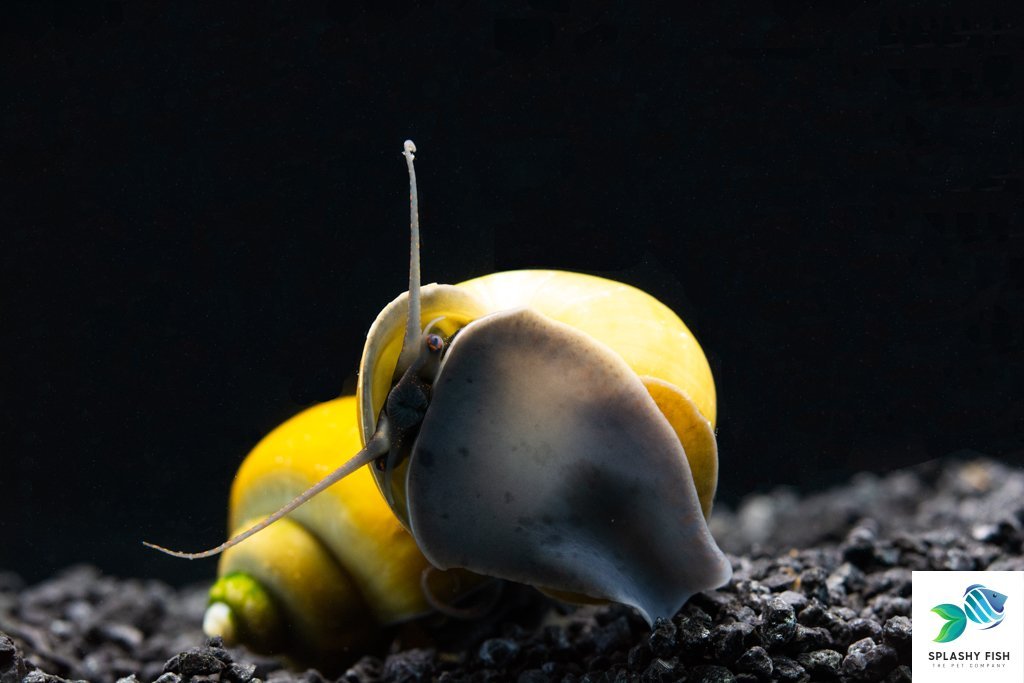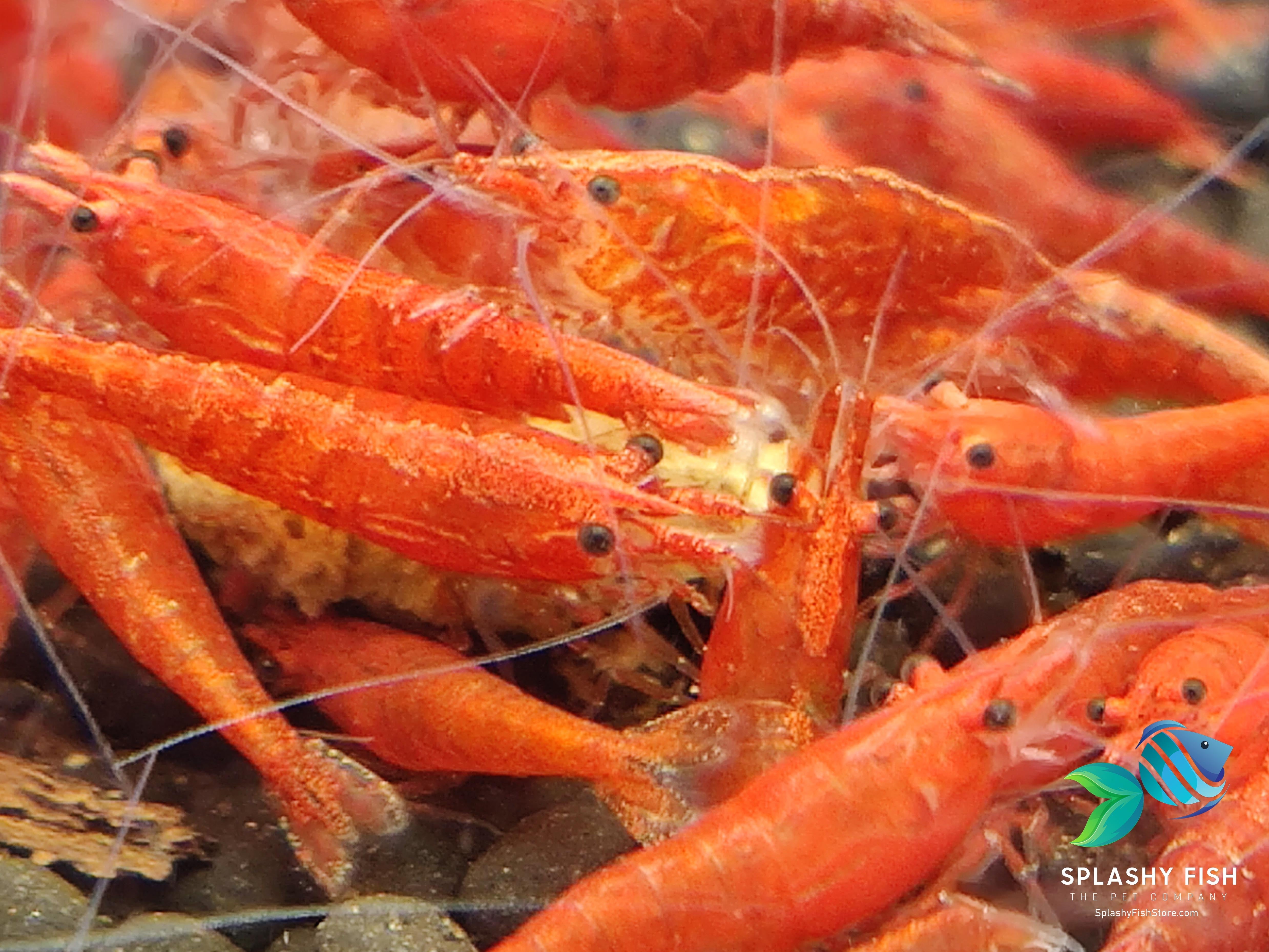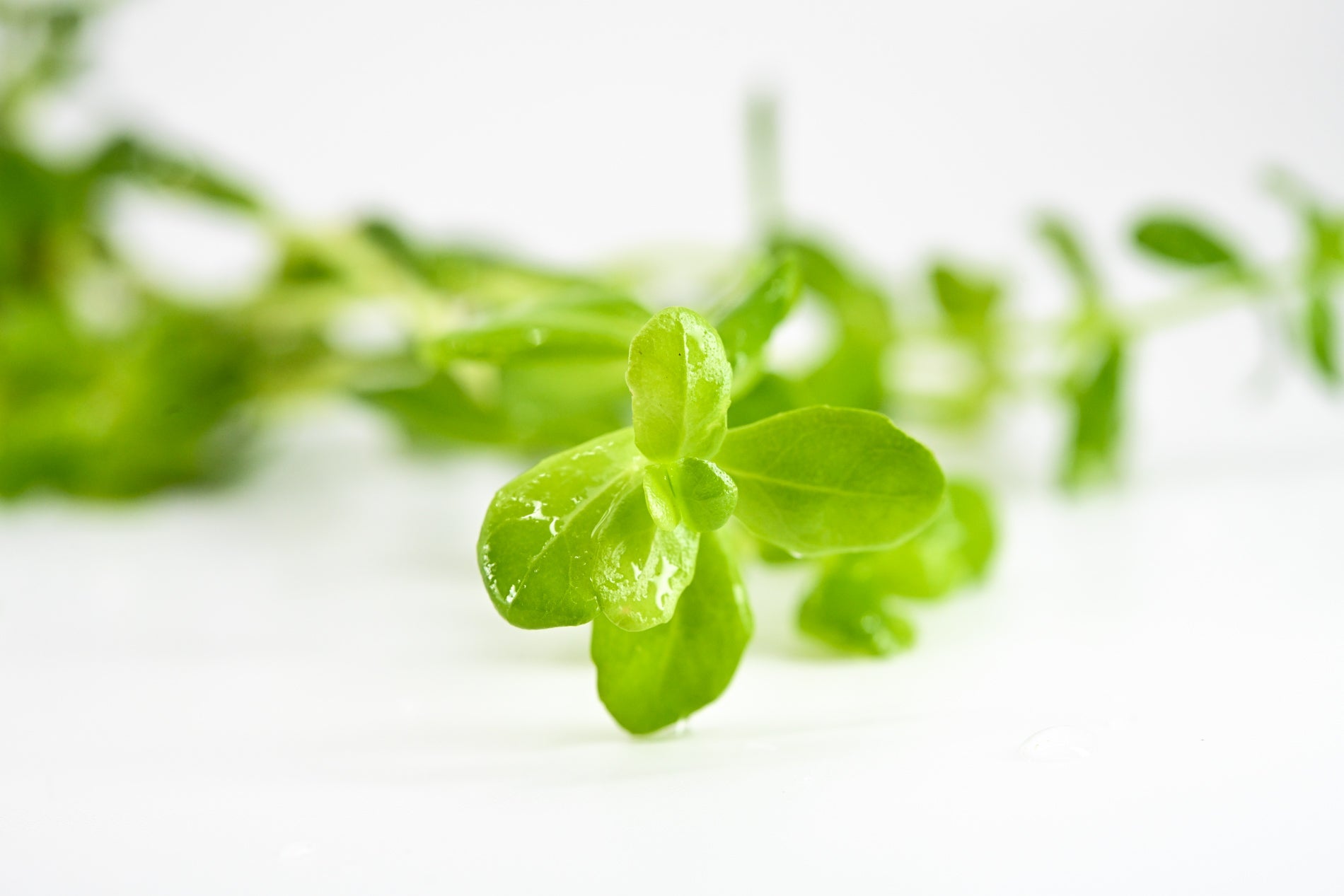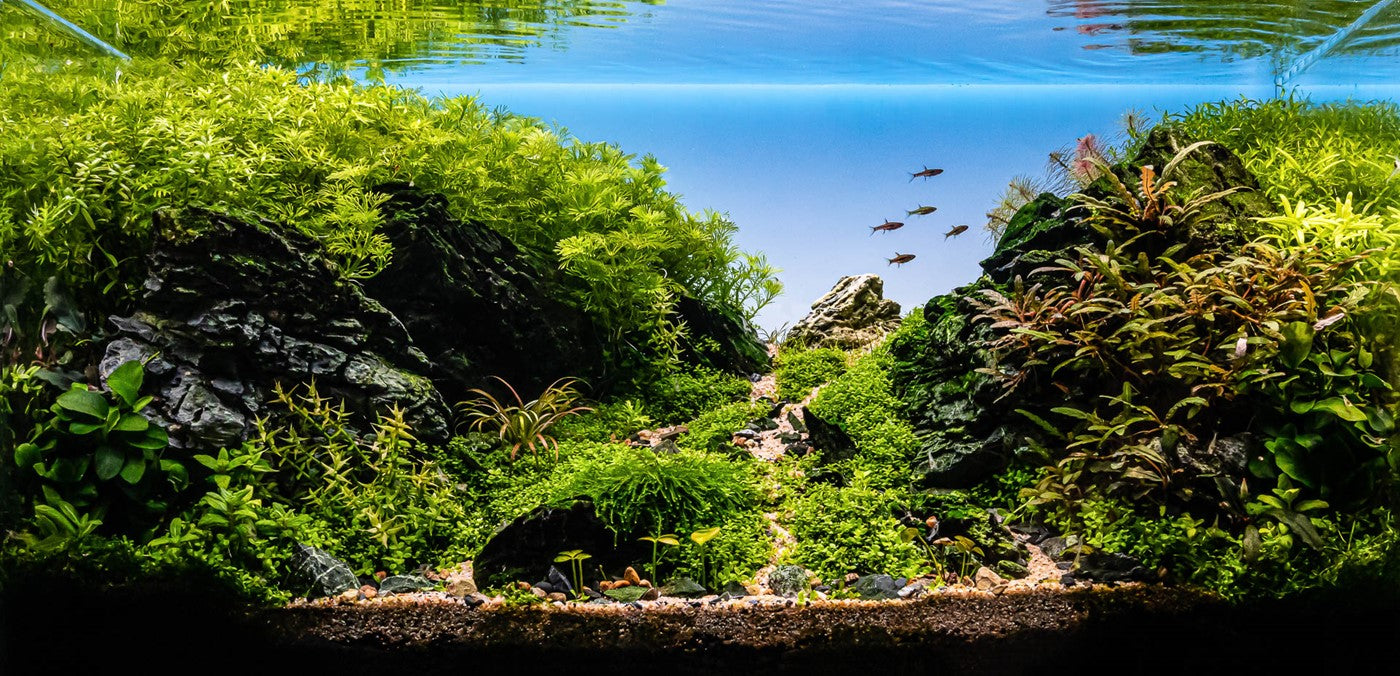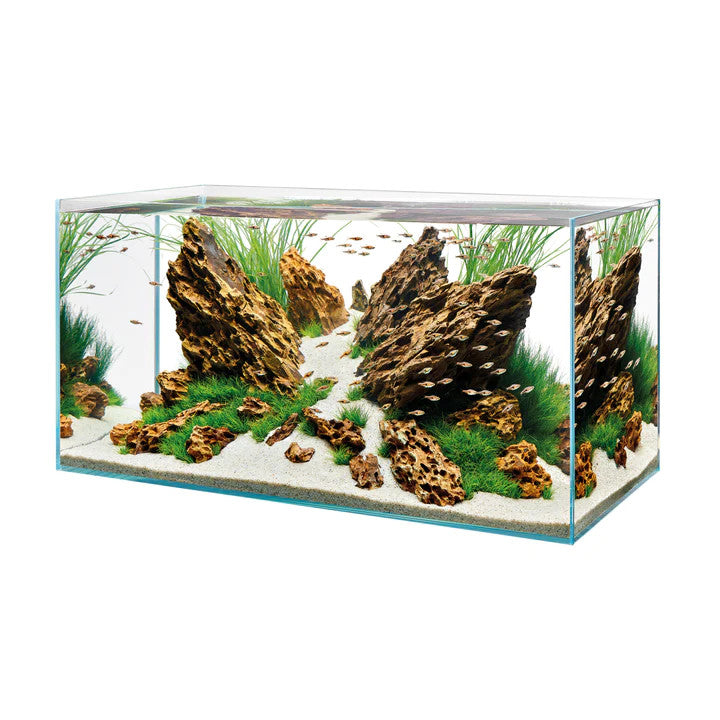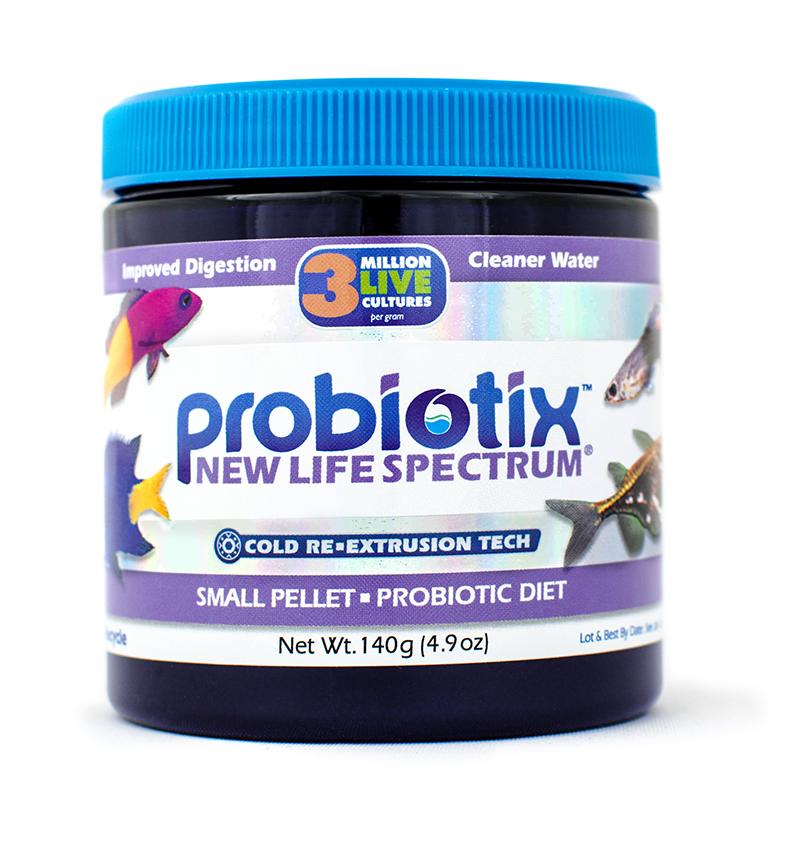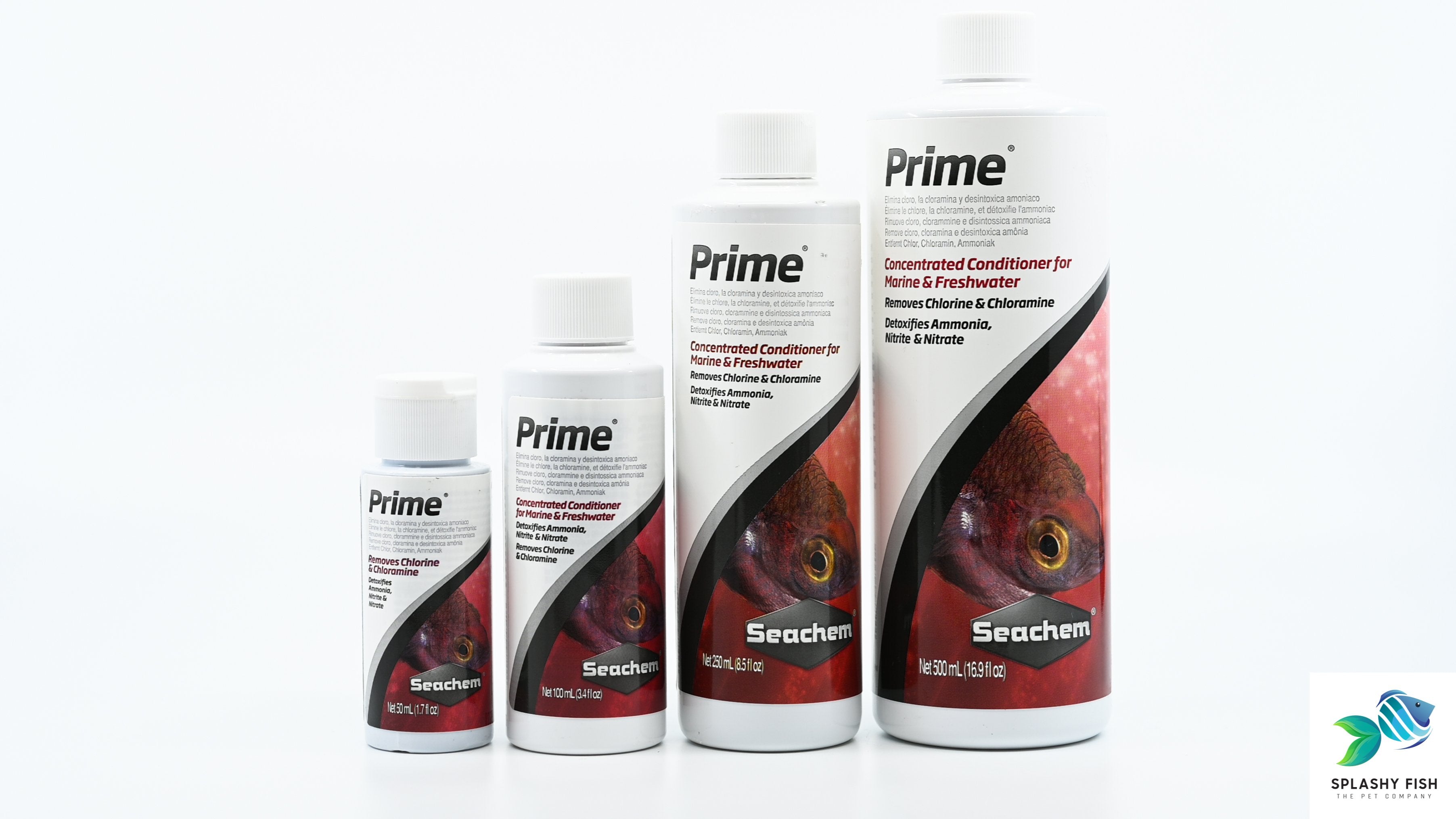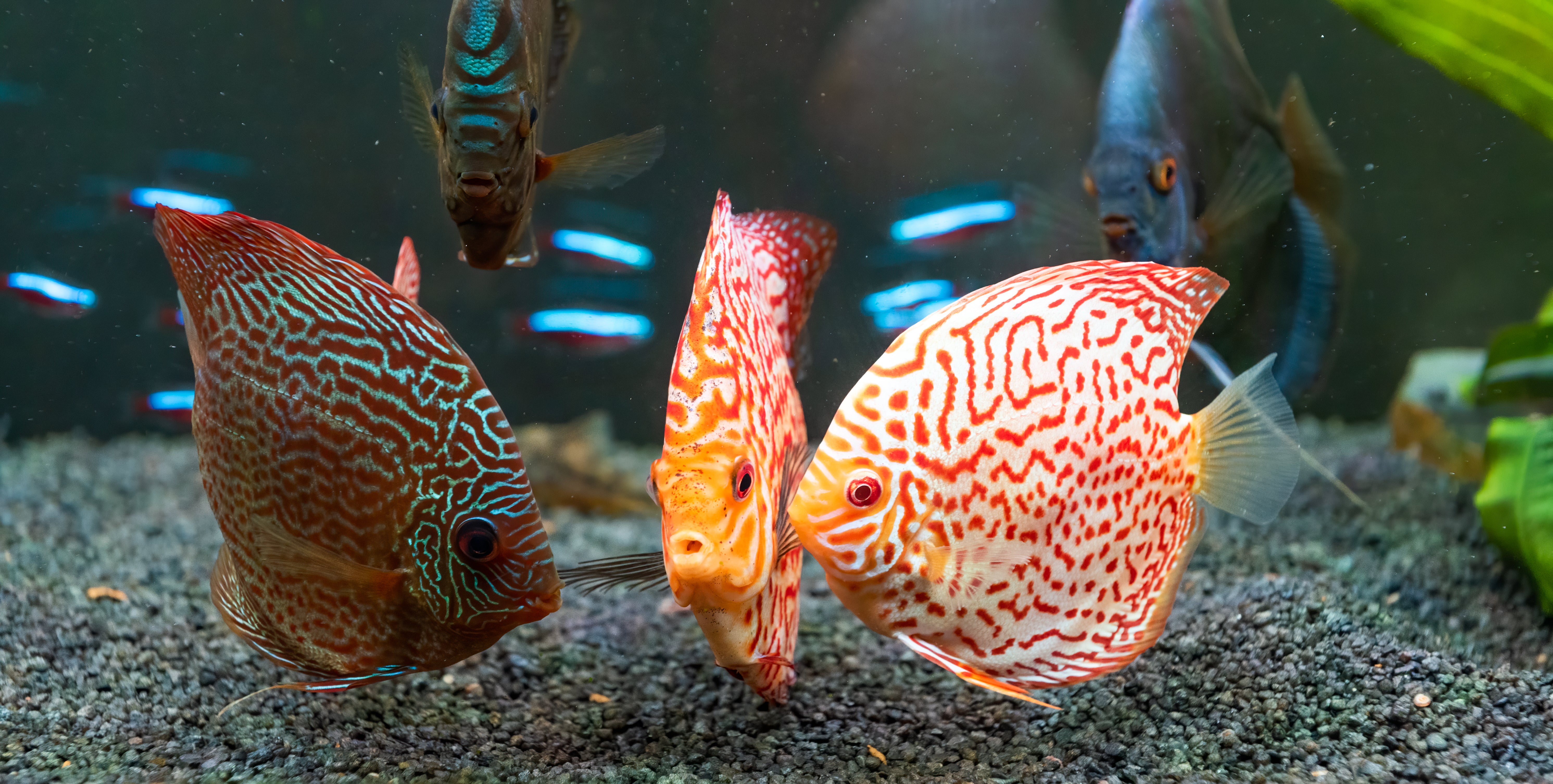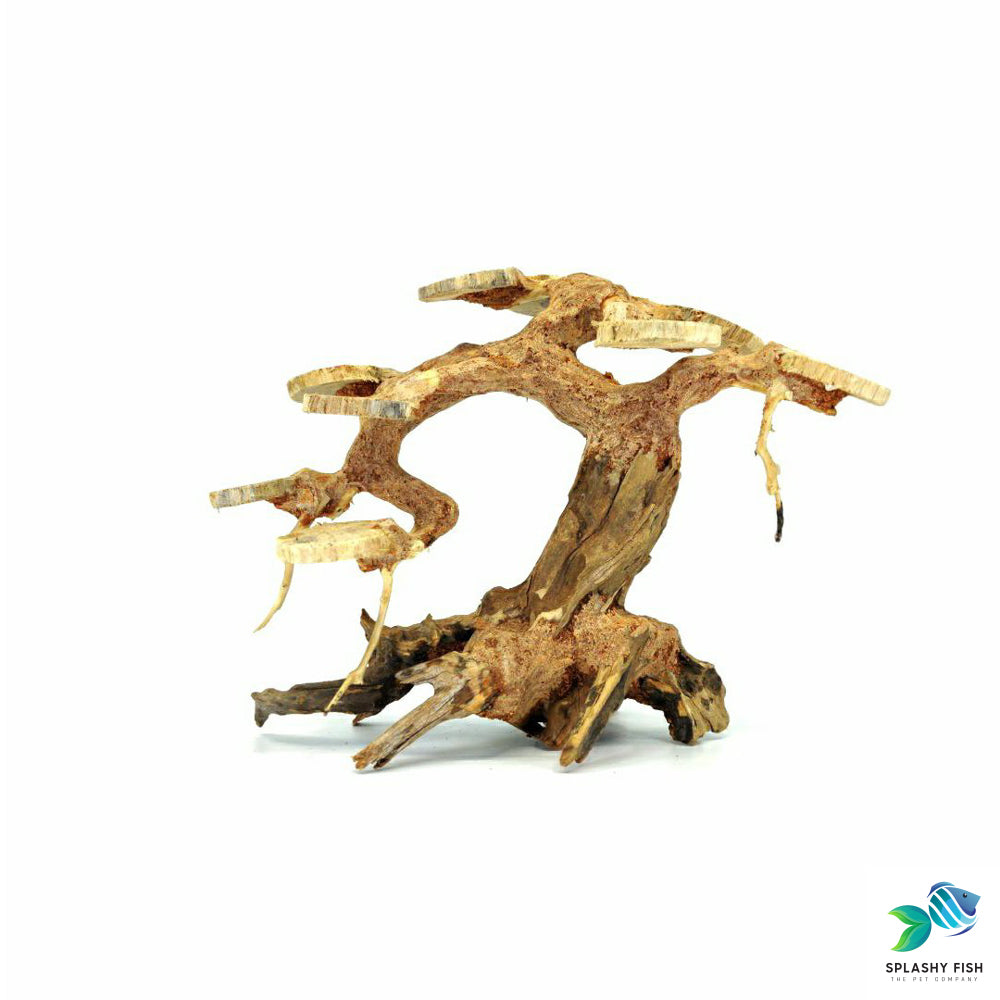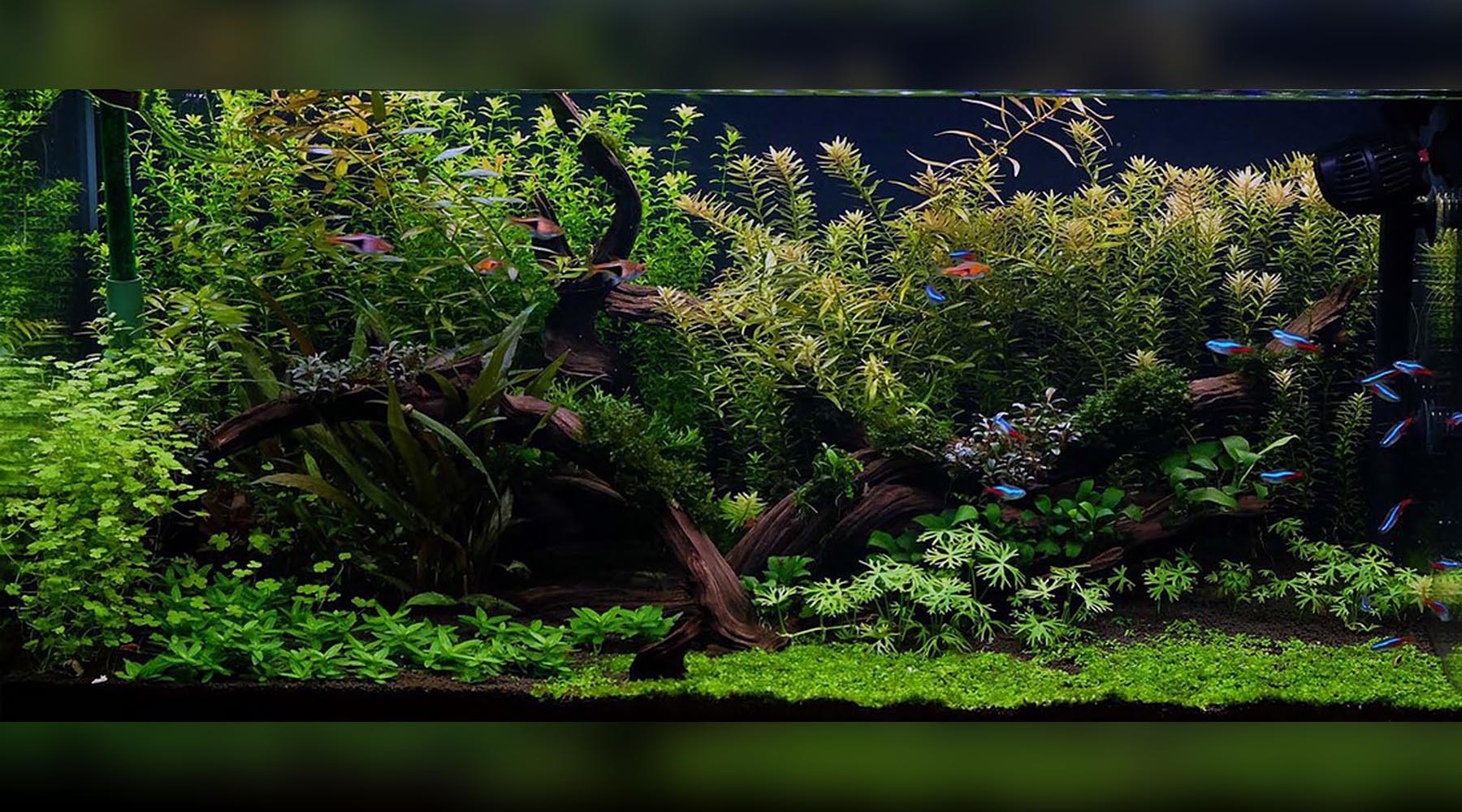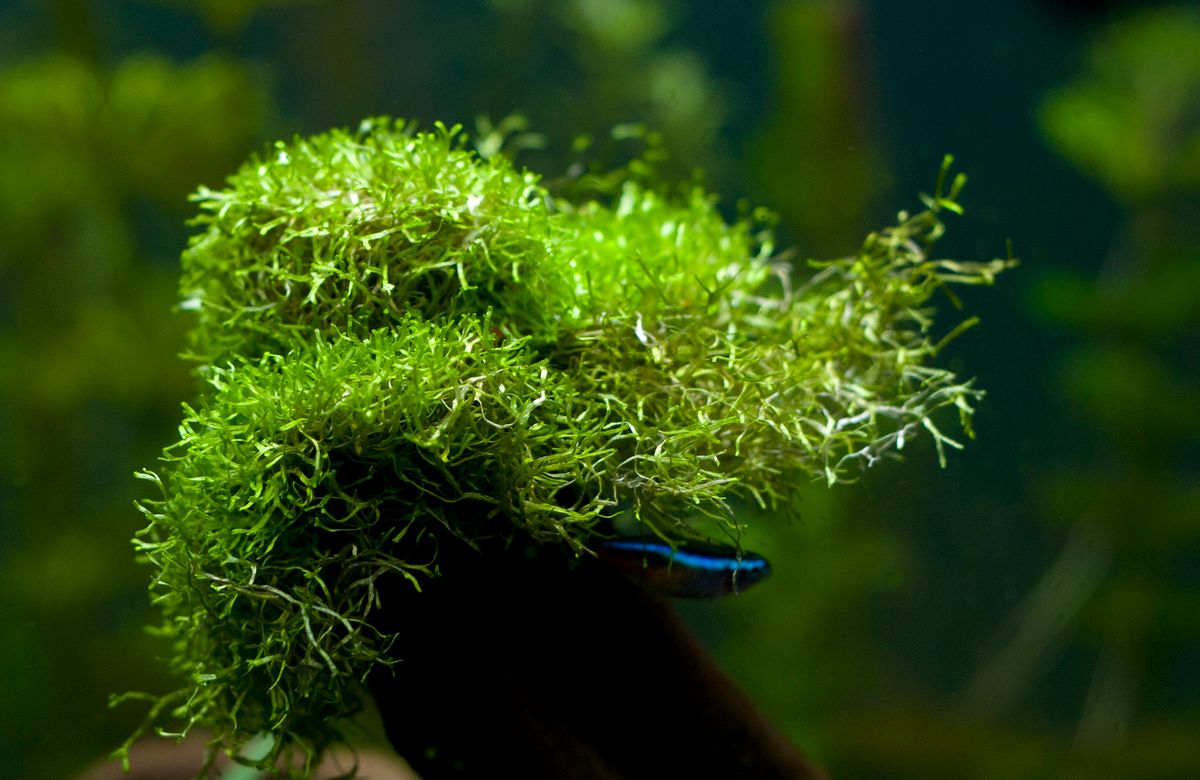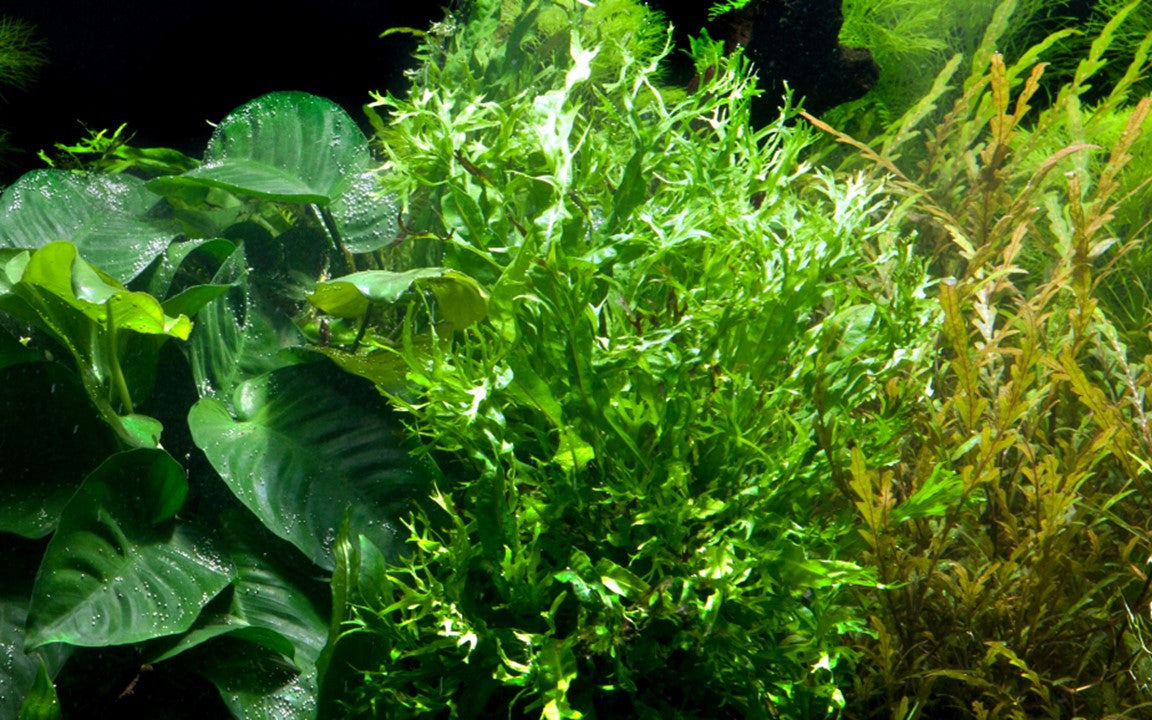CARE GUIDE FOR YOUR FRONTOSA CICHLIDS
Frontosa Cichlids are the stunning freshwater species with great personalities that aquarists could hardly ignore when looking for an addition to their tanks.

Origin and Appearance
Frontosa Cichlids, or often called Humphead Cichlids or Tanganyika Humphead Cichlid, are endemic to the waters of Lake Tanganyika in the region of East Africa. (Adult) Frontosa Cichlids impress the viewers with the distinctive large hump developed on the forehead. Thanks to that, Humphead Cichlid is given as the common name to this fascinating fish.
Such a ‘unique’ look undoubtedly draws the attention of the fishkeeping community, but what scores the point for Frontosa Cichlid is its bizarre color patterns of white and black vertical stripes overlaid alternating the body. Fins of faint blue hues sometimes reflect a similar tint to their body, making the Frontosa Cichlids more appealing in a dark theme with dimmed lighting.
Just with the above, it is needless to explain why Frontosa Cichlids are a stunning addition to your tank. Wonderfully, the species does have variants. This resulted from the isolation of distinct breeding colonies that emerged thanks to the vast space of Lake Tanganyika. These variants are not much differences except for the number of stripes/bands, the shades and arrangement of the blue color, and the yellowish membrane on the fins of some. Hence, you would occasionally be confused a little bit to distinguish the popular variants of Cyphotilapia frontosa and Cyphotilapia gibberosa (Burundi Six-stripe Frontosa, Zaire Blue frontosa/ Blue Zaire, Zambian Blue Frontosa/ Blue Face Frontosa, Red Frontosa) when encountering them.

Does color change in Frontosa Cichlids indicate health problems? On most occasions, yes. It is commonly said that the darker tone the fish is, the highly likely chance that fish suffers stress or gets bullied. However, to reach a definite conclusion, you should notice other unusual signs of being stressed such as jumping, frantically splashing, or always in an aggressive state for a quite long period.
Characteristics and Behaviors
Speaking of aggression, this seems to be the endless topic debated among the Frontosa Cichlids keepers. Are Frontosa Cichlids aggressive? We would say the fish often are, hence semi-aggression will be the proper word to describe Frontosa Cichlids’ temperament. Frontosa Cichlids belong to the Cichlidae family. If one states the fish are one hundred percent peaceful, we won’t believe an inch. However, if comparing them with other cichlid species, Frontosa Cichlids are surely one of the calmer fish that are fairly tolerant of other fishes. To develop such a temperament, the big thanks must be addressed to their wild habitats. With the large areas covered by Lake Tanganyika, it is not strange to find that Frontosa Cichlid have no choice but to co-exist with a diversified ecosystem there.
In captivity, Frontosa Cichlids are also the ruler of the tank. With the average size of 12 to 15 inches when fully grown, the tropical fish easily outcompete other candidates without ‘the hand of territorial disposition’. Given that, if you consider keeping them in a community tank, make sure other inhabitants are peaceful and comparable in size. Or else, they will be bullied or often seek a fight with Frontosa Cichlid. Best way is to keep the fish with other species that also come from Lake Tanganyika, such as [insert name] or with same-species.
Worth noting: Frontosa Cichlids are carnivorous animals that eat other fish in nature. Therefore, when finding the appropriate tank mates for them, you should not pick up the smaller fish as they probably become the delicious meals of your Frontosa Cichlids.
Indeed, it is highly recommended keeping Frontosa Cichlid fish in groups. The right number for them to peacefully live together is six to eight with the ratio of one male to other females. This resembles the living conditions in their wild habitats, encouraging their optimal growth and natural behaviors.

Can Frontosa Cichlid live alone? Can. However, and as explained above, we suggest that you should let them live in a community fish tank. If you are unable to raise them in a group, you could house one Frontosa Cichlid with some other compatible fish (like Haplochromis cichlids, Peacock cichlids, Synodontis catfish, Clown Loaches, etc.). That way will allow you to achieve the target, at the same time minimize the aggressive tendency of the only one Cichlid.
Interesting to know: You may have heard that Frontosa Cichlids could interact with people. Per some aquarists' reports, their Frontosa Cichlids will show a friendly welcome whenever they are near. However, others did not claim the same. According to them, their Cichlids are merely shy and likely to swim away into their hiding places.
Tank setup and Maintenance
Enhancing Frontosa Cichlids’ living environment by giving them an appropriate tank setup and maintenance is also another way to calm your lovely fish. The Frontosa Cichlid is known for dwelling in deep water areas of greater than 50 feet. There, the surroundings often appear to be plain and lighting is unable to reach. As such, you may not need to spend much time and effort to aquascape the aquarium tank for your Frontosa Cichlids.
Interesting facts: If you are determined to keep Frontosa Cichlids, then aquascaping is not the thing you can decide. Frontosa Cichlids are ‘notorious’ for redecorating their aquariums in the way they want. The fish will not hesitate to knock over ornaments, uproot live plants, or splash frantically or sift the substrates and move them around. Therefore, it’d be better not to design a very beautiful tank view for these Cichlids. Or soon, you are certainly overwhelmed by their … creativity.
Go with a fairly large deep tank of 75 gallons at the least (however, we suggest the bigger one given the fish’s size) decorated with rocky habitat that closely replicates the areas of Lake Tanganyika. If you have not yet had any idea of arrangement, we suggest that you should place the rock in a way creating more hiding places for Frontosa Cichlids. As semi-aggressive and territorial as these freshwater fish are, hiding places will be the irreplaceable retreat for them when threatened or stressed. Be careful of avoiding any sharp-edged rocks since they may cause injuries to the fish.
What tank size is right for keeping Frontosa Cichlids? The 75-gallon tank is a standard for a group of juvenile Frontosa Cichlids. Yet, a 150-gallon is absolutely more comfortable when these juveniles mature (3 and a half years before ready to breed). Fortunately, Frontosa Cichlids are slow-growing species. Thus, if you are unable to start with the latter, it is still ok to go with the 75-gallon aquarium at the beginning.
Live aquatic plants are usually unfamiliar with Frontosa Cichlids due to unfavorable living conditions (lack of sufficient light and uprooted by Frontosa Cichlids). Nevertheless, if you still wish to have some green colors in the tank, you could consider those growing on rock surfaces such as Java Fern.
Lighting issues: Mind that Frontosa Cichlids prefer low lighting conditions. Too much light which is strong and intense could make your freshwater fish irritated and stressed if exposed for a long period.
As for substrates, we recommend the inert types like gravel and sand. These bases not only endure the digging behaviors of the Cichlid fish but also allow the water parameters (especially pH levels and water hardness) to be stable.
Frontosa Cichlids require good water quality to survive and thrive. Hence, you need to equip your tank with a good filter. Alkaline environment and calm and slow water flows are the fish’s natural traits as such, needing resembling in their aquarium tank. Besides, adjusting tank water parameters appropriate to their requirements is definitely necessary.
Water parameters
- Ammonia and Nitrite: 0 ppm
- Nitrate: less than 20 ppm
- KH: 10 – 20 dKH
- pH: 7.8 – 9.0
- Temperature: 72 - 78℉ (22 - 28℃)
- Water change: weekly 25-50% water change
Following the above, your Frontosa Cichlids will be happy and healthy for a long term.
Notes: Never acclimate your Frontosa to a new fish tank that has yet cycled. Such tanks may have unstable water parameters and large amounts of ammonia and nitrite levels, which easily cause shock (even death) to the fish.
When performing water changes, it is recommended to treat the new added water with water conditions to make your Frontosa Cichlids safe. At the same time and for convenience, you could concurrently vacuum the substrates to maintain the water quality of the fish tank aquarium. It is worth noting that some Frontosa Cichlids can incredibly get stressed during the cleaning process, which is easily observed in the belligerent behaviors of the fish or jumping or splashing extremely. Hence, be careful and cautious if your fish are of the case.
Diet/ Feeding
Contrary to the semi-aggressive temperament, Frontosa Cichlids tend to be a bit lazy regarding forage for food. In natural habitats, Frontosa Cichlid fish feed on other smaller species but in a way of stealth rather than speed to catch their prey. This happens the same in a captivated environment. For a healthy and balanced diet, you should feed them with various food sources rich in proteins such as high-quality cichlid pellet (best recommendation for regular diet), flake fish food, mysis shrimp, krill, prawns, earthworms, artemia, etc. Sometimes, Frontosa Cichlids will not picky to accept a little bit of algae and plant matter as well.
In spite of being a lazy feeder, these Cichlids will be an opportunist to overeat whatever is given to them. Therefore, mind to schedule the proper meal time for the fish so they won’t be prone to constipation, swim bladder disease and obesity. If you have not figured out the proper schedule yet, you could try a six-day feeding with one day off. Then, slowly observe the diet habit of your Frontosa Cichlids and adjust accordingly.
How long do Frontosa Cichlids live?
Given the right living conditions and proper diet, your Frontosa Cichlids could live up to 15 years in average. Some even live for longer than 25 years. This is somehow due to the slow-growing nature of the Cichlid fish as the growing-up stage takes up almost the majority of their lifetime.
Breeding
Frontosa Cichlids are regarded as not difficult to breed in home aquariums and rarely require a special breeding setup. However, to cause the breeding to happen, you need a good ratio of male and female fish. It is said that one may rely on their appearance to tell them apart despite the slight differences. A male Frontosa will normally grow bigger than females and their pelvic, anal and dorsal fins grow longer with age. Apart from these differences, the male and female look very similar. Juveniles of both male and female Frontosa Cichlids look quite alike.
If you keep the juvenile fish, you may have to wait for 3 years for the fish to grow up and start breeding. Freshwater Frontosa Cichlids are mouth brooders, which means the females will carry the eggs and fry in their mouth for extended periods of time. Eggs often hatch after 40 to 54 days into fry having the average size of around half an inch. The male fish are known to have little involvement in the process other than fertilizing the eggs and providing some protection for the fry once released from the female’s mouth.
At Splashy Fish Store, we supply a wide range of Frontosa Cichlids which come from reliable sources with reasonable prices. We further guarantee that all of our freshwater Frontosa Cichlids will go through the quarantine process for a period of 14-day before sale. We care about the quality and strive to provide you the best we can. Visit our store to find what surprise is waiting for you.


